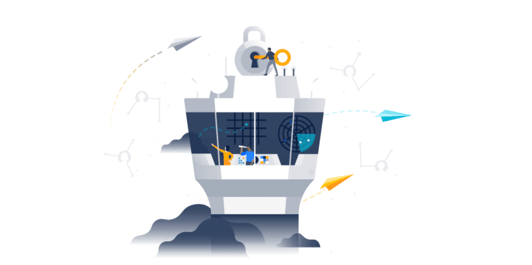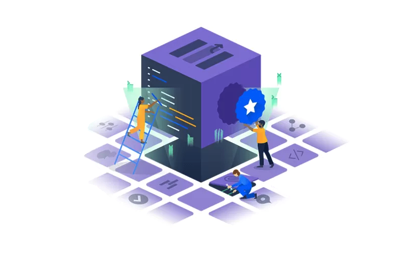Uncategorized
What’s on the Atlassian Roadmap for Q2 2022?
This article was written by Kamil Beer, an Atlassian Engineer at Idalko.
Atlassian continuously invests in the Cloud platform and its features. To prepare the users for what comes next, Atlassian created a public roadmap with the upcoming functionalities. So we update this blog post every quarter to keep you posted about what’s going on with the Atlassian roadmap.
So welcome to our newest Atlassian Roadmap review! The biggest change this quarter was the roadmap’s UI change – when you browse the feature plan on Atlassian’s website, the first thing you will likely notice is the redesign. You can filter the announced features by product, category, status and text, and then sort the results.
This article is based on the last roadmap update in April 2022. Please note that some features are planned to be shared across several applications; we mention this in each application’s summary.
So let’s see what on the Atlassian roadmap!
What is covered in this blog post:
- Atlassian Access
- Cloud Apps
- Bitbucket
- Confluence
- Jira Software
- Jira Service Management
- Jira Work Management
- Jira Align
- Opsgenie
- Statuspage
- Trello
Atlassian Access

Last quarter, Atlassian Access was announced as a separate product on the roadmap. The Support multiple identity providers for a single organization feature, focused on user provisioning from multiple user directories (including SSO support), remains to be done in Q2.
There are also two new features: Selective user claim, which is worded fairly ambiguously (a possible interpretation is that Jira Service Management customers could be provisioned based on a verified domain), and Organization-level user and group directory for existing cloud customers.
There is little data on the first function so hopefully, we will get an update in Q3, when it should be released. The second one is described better: it will allow you to use a single user base if you have multiple cloud products, like two Jira or Confluence instances. It should be shipped in Q4. This feature already works for new customers, and soon it will for existing ones, too.
In progress – 1
New – 2
Cloud apps

You can now migrate one more app: the Advanced roadmaps migration was successfully enabled. Enhanced Insight capabilities were also shipped, strengthening the Asset Management app with object attachment support and generation of QR codes.
As for Confluence, Team Calendars migration is still in progress and should be shipped in this or in the next quarter, while Confluence questions migration was delayed to Q2/22.
Data residency for apps is a feature originally marked for release in Q3/2021 but was postponed again, this time to the end of 2022 (for a whole year in total). Relocating app data seems to be more and more problematic to implement.
How about Insight?
The new function Access Insight fields through Forms will connect Jira Work Management users to Insight fields, and should come out in Q2-Q3. Insight fields will become accessible on phones thanks to Mobile app support for Insight, still scheduled for the first quarter of this year.
Finally, Reporting on configuration items and assets promises to improve Insight with “customizable reports” and “dashboards”.

Advanced Roadmaps will be getting a feature requested by many PMO teams: enabling non-Jira users to see a Plan with Export PNG for Advanced Roadmaps. This is scheduled for Q1/22.
Several general app changes have been announced, like Admin Controls for 3LO App installs. 3LO stands for “three-legged OAuth”, used by external apps to access the Jira API on behalf of a user. This would let the administrator enable regular users to configure third-party apps for Jira and Confluence and is scheduled for Q1/22.
App Data Access Controls (to be released at the end of the year) would allow apps to appear only in selected spaces or projects, which would definitely help the user experience – if a team doesn’t need an app in its project, it simply won’t see it.
Shipped – 2
In Progress – 1
Delayed – 2
New – 5
Bitbucket
Bitbucket now includes two new features: Bitbucket encryption at rest and Bitbucket Cloud Migration Assistant for Data Center customers have been released. Bitbucket project-level settings are in progress and should be shipped in either this or the next quarter.
Same with Secure network connectivity with server and Data Center products that will affect Bitbucket, Confluence, Jira Software, and Jira Service Management.
Windows builds for Bitbucket pipelines and MacOs builds support for Bitbucket Pipelines have been delayed, for Q1 and Q2, respectively. Multistep deployments have been postponed from Q1 to Q2.
5 new features will be coming for Bitbucket: project-level permissions (announced for Q2/Q3) will let administrators manage user rights at the project level.

Also, following the past quarters’ trend where Atlassian has enabled running Bitbucket Pipelines runners on on-premise infrastructure, this will be upgraded further with a way to Autoscale self-hosted runners in Kubernetes so that Kubernetes can scale your on-prem runners automatically.
Additionally, in Q2, administrators will be able to enjoy Improved audit logs for Bitbucket to monitor suspicious activities per repository.
Signed commits should be released in 2022 – no specific quarter has been confirmed – and will allow users to add their GPG key to digitally sign a commit.
User provisioning for Bitbucket, scheduled simply for 2023, should allow you to add an external identity provider where you’d set up permissions per repository. This feature has been in the Atlassian backlog from May 2019, and it appears as a no small task – requiring the restructuring of the whole Bitbucket user management without affecting how it works for existing Bitbucket users.
Shipped – 2
In Progress – 2
Delayed – 3
New – 5
Confluence

A total of seven Confluence features were shipped, among them Search analytics improvements showing metrics like click-through rate and searches over time – read more here. Image support in templates covered in this community thread provides a feature that’s on-premise, but on Cloud, it’s missing: to add media, e.g. pictures, into document templates. A cloud-specific function will be the possibility to create a custom splash screen per template.
Personal spaces for all, as described here, will automatically create a Personal space for each user. It seems, however, that many admins are concerned about this from the admin overhead and transparency perspectives, which have reawakened user interest in the CONFCLOUD-71300 ticket.
Another feature that will affect all users is the New Confluence Home Page that brings a redesigned Confluence “Dashboard”, different from the former “Your Work” page, making sure that the recently visited and worked on pages stay on top.
Availability of free apps for <10 users has been implemented for Confluence and Jira Software. This is a huge change: many popular apps, including ScriptRunner or Jira Workflow Toolbox (see the full list here), are now available for small teams for zero charges. Along with the mentioned link, you can find these apps using a new filter on Atlassian Marketplace, called “Free up to 10 users”. At the time of writing (April 2022), there are 831 such apps.
The Contextual help function brings a redesigned help menu in the upper right corner, and finally, the Native Knowledge base in Jira Service Management powered by Confluence, announced as far back as in Q3/2021, has been released.
Three features have been delayed: Visualize table data as a chart (from Q4 to Q1), External Collaboration (from Q1 to Q2), and Automation for Confluence (from Q1 to Q2).
Seven features are in progress, some even still dated for Q4/21. Reactions, Presenter mode, User data compatibility, User activity log, Faster and Better Page Loads in Confluence, and Draft Improvements. 35,000 user general availability remains to be shipped in Q1.

As for removed functions, only the Confluence editor experience improvements met this fate – but it’s also possible it was simply changed into the new feature Faster editor loading in Confluence, scheduled for Q3.
Just like many Confluence features have been shipped, many new ones were announced: The Cross-deployment guide was on the roadmap for two quarters, and despite it still being labeled as incomplete, it appears that it actually was released, as we can see on this page.
Let’s begin with features to be released the earliest, still marked as Q1: Daily Digest seems to help those overwhelmed by Confluence notifications, as some users will be able to receive a digest of page updates only once per day.
Page outline on Confluence Mobile should improve the mobile application UI.
Autosave Indicator will allow you to see if the page that’s being edited was already saved; some Confluence instances already have a similar feature rolled out, which shows you whether the draft was saved or not (or if perhaps the connection was lost).
Page Statuses might become a better substitute for the Status macro that must be updated manually.
PDF Export Improvements should improve the PDF rendering and interface when exporting Confluence pages to PDFs.
In the second quarter, Custom panels will allow you to customize the Panel macro with your own emoji and panel colors so that it stands out more. Migrating nested groups will enable the transfer of these groups between AzureAD and Atlassian Access when you migrate Confluence or Jira Software. However, it’s not clear if this use case actually transfers the nested groups to Access or, if Access will simply use AzureAD to get the users.

A set of interesting new features has been announced – Atlassian Analytics, Atlassian Data Lake, and Direct connections to Atlassian Data Lake. Data Lake is supposed to be an enterprise-level platform used for reports across products and instances, with the option to include data from BI tools like Tableau or PowerBI. The reporting platform itself should be ready by Q2-Q3, with external data connections ready by Q3-Q4.
Features scheduled for the end of 2022 include mainly platform upgrades like App Data Access Controls, enabling you to reduce 3rd party app access to only certain projects or spaces. This means that users that don’t work with a certain app will no longer need to see it on irrelevant Jira issues or pages. This will be shipped at the end of the year.
Backup and Restore Improvements are described as improving these functions, but without any detail. Audit logs for Jira and Confluence permission changes are similar: Atlassian says that the tools will have permission changes logged differently but without further explanation.
For 2023 we’ve got FedRAMP Moderate authority to operate (so far only for Jira Software and Confluence) and Granular admin roles that will allow administrators to have separate permissions for billing, user management, and product configuration.
Shipped – 7
In Progress – 7
Delayed – 3
Removed – 1 (?)
New – 16 (+4 shared features)
Jira Software

Small teams working in Jira Software can enjoy the same benefit as in Confluence: hundreds of free apps. You can now also find important work and updates even faster on Jira mobile app. Two features are still in Progress: Custom filters in team-managed projects (scheduled for Q2) and Parallel sprint support in team-managed projects (for Q3). And there are more changes to this type of project coming.
Story-level issues on the roadmap, that would show Stories under Epics on the Software project plan, have been delayed from Q1 to Q3/2022. And both performance improvements, Faster Jira Software issue loading and Faster Jira Software company-managed (Classic) boards and backlogs, were postponed for almost a year; to Q1/23 and to Q3/23, respectively. Pull request and Branch insights is the only feature that was removed.
As mentioned, many new features were announced for team-managed projects:
Use global custom fields in Jira’s team-managed projects, scheduled for release in Q3-Q4, just like Multiple boards per project support for team-managed projects, are both fairly clear about what they’ll change. In the second quarter, Required field support for team-managed projects should also be shipped, allowing you to set certain fields as mandatory.

Boards will also receive improvements: Sprint Burndown Insight (marked for Q1) will show the Burndown chart on the board and Blocked Issue insight will hint at better visibility of flagged and blocked issues (in Q2). DevOps Toolchain Overview isn’t explained in much depth, just that it will help teams “discover gaps and build visibility” in Q4.
Flexible naming of Epics, scheduled for the next two quarters from now, is similar to a feature that’s already on Data Center version 8.17, where it’s possible to replace the terms „Epic“ and „Sprint“ in Jira with other terms better suited for Agile at Scale frameworks.
Consolidated search in Jira was announced for all three Jira platforms, promising to implement the same type of searching both in and across projects at the end of the year. Perhaps this alludes to expanding the new in-project JQL editor across the rest of Jira.
Searching is also part of the faster issue navigator in Jira Software, which promises better search performance. It should be shipped in Q2/Q3.
Shipped – 1 (+1 shared feature)
In progress – 2
Delayed – 3
Removed – 1
New – 10 (+14 shared features)
Jira Service Management

Jira Service Management has received Integration with Jira Software and Confluence Server and Native Knowledge base in Jira Service Management powered by Confluence. Unfortunately, the latter feature lacks a detailed explanation, as the link on the roadmap leads only to the usual knowledge base documentation.
DMARC Support for Custom Email Domain Notifications is described better, and you can read how it helps send Jira e-mails under a custom domain here.
Dynamic forms native to Jira Service Management allow you to add forms that customers can easily fill. Investigate code changes relating to incidents newly connects Opsgenie and Bamboo together and help explain incidents possibly related to code deployment. You can read about linking these two tools here.
Advancements in configurable dashboards and reports remain scheduled for Q1, and Redesigned ticket view was delayed by one quarter. Service object extensibility and Enhanced on-call schedules were removed.
Q2/Q3 should bring Advancements in the Knowledge base in Jira Service Management. These aren’t described in detail but seem to expand the functionalities of the new native JSM Knowledge base. Custom reporting for Jira Service Management will allow you to create dashboards combining information from multiple tools and sounds like the new Data Lake feature.
Improved handling of emails should enable you to view attachments shared via e-mail notifications, although no more detail was given.

At the same time, Atlassian plans to release Support for licenses up to 20,000 agents and the Enhanced approval engine that promises to simplify complex approval processes (unfortunately without any detail). Collaborate and manage issues with Slack & Microsoft Teams hints toward tickets being handled directly from chat tools.
Improving portal sign-up experience for all types of customers will introduce the grouping of internal and external customers as two different user types. Finally, Forge support for Jira Service Management will enable Forge apps to work with JSM’s API.
In the last quarter of 2022, Atlassian plans to ship Improved data residency support for Jira Service Management, but again the details are sketchy – just that it will be simpler to save data in a certain location. Just like Freeze and maintenance windows for Change calendar, which aren’t explained in much depth.
Post-Incident Reviews will likely work with Opsgenie by documenting the details and outcome of a solved incident, just like Rules for creating incidents from alerts will – probably – add automation creating incidents from alerts. Improved risk assessment for change requests has another vague description, but it likely will be connected to the new Forms.
In our opinion, the most outstanding feature is the Virtual Agent for Jira Service Management, scheduled for the end of 2023. Even though the roadmap entry includes a broken link, its URL mentions Percept.ai – an automated support chatbot.
Shipped – 5
In progress – 1
Delayed – 1
Removed – 2
New – 14 (+12 shared)
Jira Work Management

Team-managed Jira Work Management Projects and Card customizations were released, and so the team projects will no longer be exclusive to Jira Software. The second feature allows you to filter issues in business boards by assignee and by the due date.
It also makes it possible to show or hide fields on issue cards. Read more about it here.
Another function, the View issue hierarchy on the list, is still in progress and is to be shipped in Q2/Q3.
Newly announced JWM functionalities include Multiple Forms per project, which will let you use more than one form per project and per issue type, expanding the ProForma integration across Jira.
Search across all views will enable users to do just that. Embeddable views mention an Atlassian Editor that will create interactive views of JWM projects. What this editor is or what exactly will it bring isn’t unfortunately described in much depth.
All three functionalities are scheduled for Q1. For Q2, the Revised Summary Page promises to improve the old Summary project section, which for a long time remained the same as on-premise.
Shipped – 2
In Progress – 1
New – 4 (+3 shared)
Jira Align

Improved API 2.0 coverage and Improved OKR experience remain in progress for Q1. Atlassian continues to focus on Jira Align by introducing four new features.
Hourly spend for Jira Align appears similar to what’s provided by the Tempo Budgets app: calculating work spends based on time tracked on stories. Feature forecast by team changes how forecasts work: work on portfolio epics won’t be forecasted based on team capacities, but rather effort on features will be forecasted based on teams – introducing a different way to track the team effort needed to deliver a feature.
In Q2 and Q3, Atlassian plans to implement PI tracking with Program Increment Progress 2.0. It will notify stakeholders about delivery issues and report on historical scope changes. Improved navigation should help Align users get where they want via application navigation tweaks and a better Align integration in the Atlassian stack.
In Progress – 2
New – 4
Opsgenie

Most Opsgenie features have been moved under JSM, like Post-Incident Reviews or Rules for creating incidents from alerts, so only a few still remain under Opsgenie on the roadmap. The Enhanced on-call schedules were removed, and a new function called New opsgenie alert integrations was announced for Q1. It will enable the creation of integrations between Jira Software and Jira Service Management.
Removed – 1
New – 1
Statuspage

This quarter, Statuspage didn’t receive any new features – and Statuspage Advanced User Permissions remain in Progress.
In Progress – 1
Trello

Atlassian announced five new Trello features last quarter, and now there are four more.
However, only one was actually released, and that was Trello in Atlassian Email preferences. Thanks to it, users can change their Trello notification settings on the same page that’s used for notifications from other applications. Four features are still in progress, namely Trello in Organization Insights (Q1), Discover new workspaces (Q2), Automatic license provisioning (Q3-Q4), and Improved audit logs for Trello (2022).
The new functions are all planned for Q2: Bulk actions for Trello Enterprise admins will allow them to filter and select multiple users to change their license status. Or they’ll be able to move workspaces to Enterprise in bulk.
The second “bulk edit” feature, Bulk enable of PowerUps for admins, will make it possible to enable PowerUps on several boards at the same time.
A new editor for the card description should improve the text editor in the web app so that the users no longer have to use Markdown for formatting. Trello in cross-product search will enable searching for cards in Trello from other Atlassian tools, and vice versa.
Released – 1
In progress – 4
New – 4
Conclusion

The Atlassian Cloud roadmap published for Q2 certainly surprised us. The focus obviously remained on Jira and Confluence, but Jira Align’s further expansion hints towards increased attention to the application. Jira is steering more and more towards team-managed projects, which was further confirmed by their release in JWM.
The new Data Lake feature, spanning multiple Atlassian applications, seems like a powerful enterprise tool – unified reporting across instances, including external data sources, holds large potential. Small teams weren’t forgotten, either, as they received an impressive option to use various apps for free.
Insight is gaining more presence, and so does Confluence: 7 features were shipped and 7 are in progress, compared to 6 and 4 from last quarter. 11 new functions for Confluence were announced last time, and today, there are 20 of them. This also happened to Jira Software (from 9 new features to 24) and JSM, which tripled the number of new features from 8 to 26.
In this regard, Jira Work Management seems again left behind its two siblings. Although we can wonder how many functions will be successfully shipped and which will get delayed or removed, Confluence’s and JSM’s records this quarter may keep us optimistic.
Recommended Reads:
- GDPR: The Complete Guide to Compliance Regulations in Jira
- Maintaining the Atlassian Stack: Best Practices
- The 2021 Guide to Migrating Jira: Preparation, Planning, Testing, and Execution
- How to Prepare and Validate your Jira Test Instance after Changes or Migration
- Migrating Atlassian Apps from Server to Cloud – Part I: Migrate Scriptrunner
- Migrating Atlassian Apps from Server to Cloud – Part II: Gliffy and Draw.io



